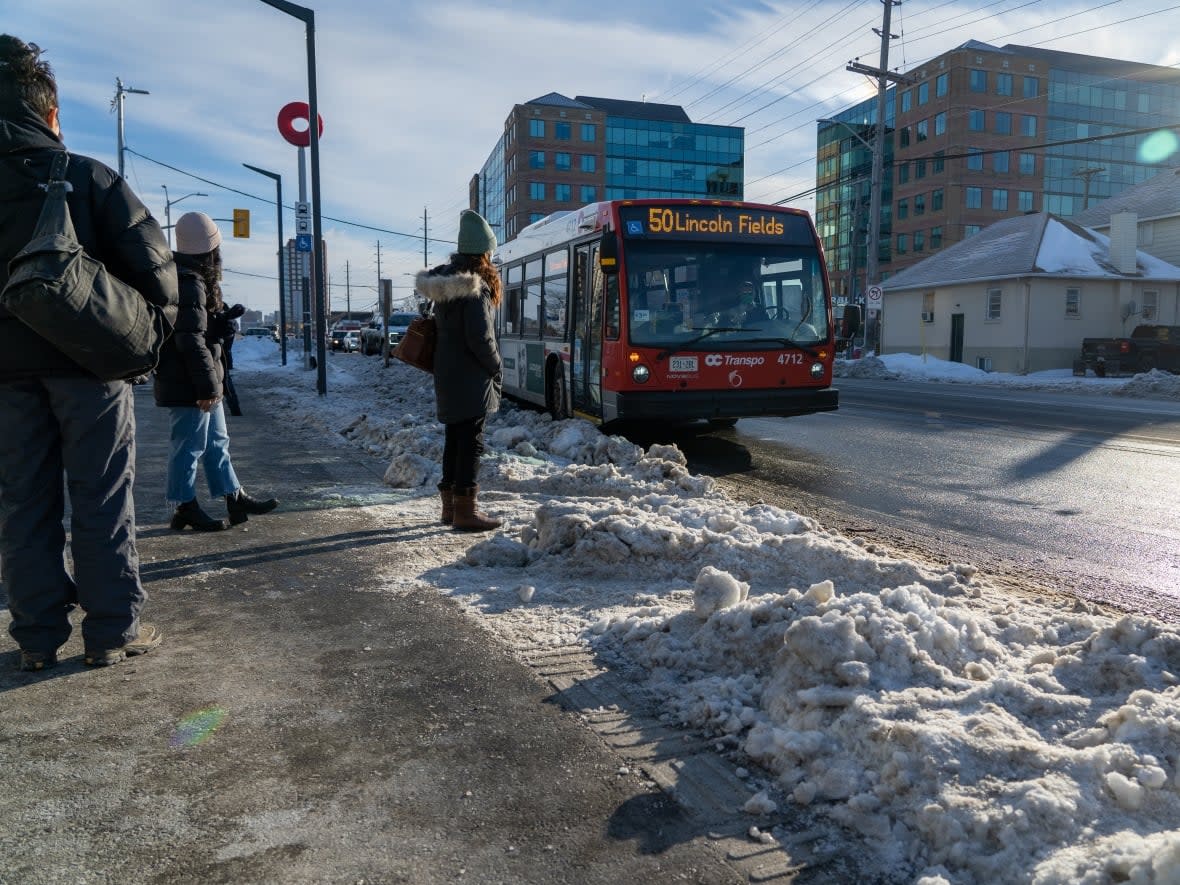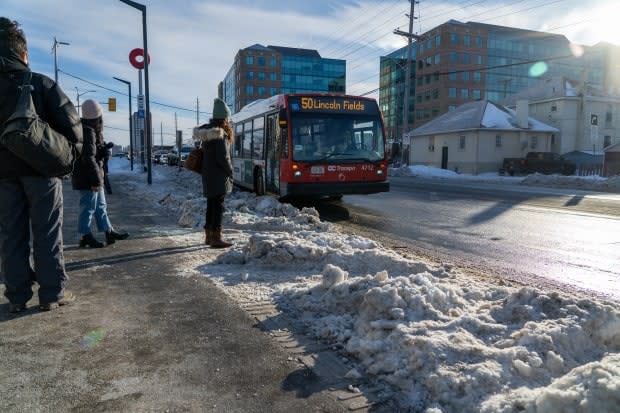Cash-strapped OC Transpo 'very happy' for return of more public servants

Monday marks the next step in the federal public servant transition back to the office after nearly three years of remote work. While Ottawa transit officials are happy to see an increase in ridership, it's unclear if that will recover enough revenue.
Unlike previous years, OC Transpo head Renée Amilcar said the City of Ottawa has been getting updates from the federal government on the return to the office for the city's largest workforce.
The Treasury Board Secretariat announced in December that employees in the core federal public service would be required to come into the office for at least two to three days a week by March 31, with some transitioning back starting Monday. Others had already returned.
It's not yet clear how many federal employees will be headed to various offices, or what days of the week they would need to use buses and the light rail line.
Regardless, the boost in ridership is welcome among city leaders.
"OC Transpo is very, very pleased, is very, very happy to have more customers and we [are] very excited to welcome them," said Amilcar.
With more than 560 buses, 8,400 routes, 4,700 hours of service and 13 trains on tracks during peak hours, Amilcar said OC Transpo is equipped to welcome the expected 100,000 or so members of the public service back aboard transit.

Low ridership, low revenues
The transit department was the branch of city operations hardest hit financially by the pandemic. After March 2020, ridership fell drastically and blew big holes in recent budgets.
Meanwhile, the city continued operating the transit system for a level of ridership that didn't materialize. For instance, the 2022 budget was based on 82 per cent average ridership, which turned out to be nowhere close to the reality.
OC Transpo ridership, compared to pre-pandemic levels
Instead, ridership sat around 50 or 60 per cent of 2019 levels for much of 2022. The most recent figures show OC Transpo saw 5.6 million trips in November, or 60 per cent of the pre-pandemic level. Para Transpo's ridership in November was 75 per cent of the same month in 2019.
Until recently, upper levels of government have shielded the city from having to make major cuts. Hundreds of millions of dollars have flowed to cover the city's pandemic-related losses and costs for the past few years.
City staff don't expect that to continue into 2023, however.
It will be a 'really challenging budget year,' chair says
It's still unclear if public servants rejoining the daily commute will see ridership return to pre-pandemic levels. With the planned hybrid model, workers will only be going into the office two to three days a week.

"[There are] still a lot of question marks, but just knowing that there is this plan to have people return to the office two to three days a week, that's a bit of certainty that we did not have before," said Stittsville Coun. Glen Gower, the new chair of the city's transit commission.
Still, Gower expects it to be a "really challenging budget year" given the current pressures on OC Transpo, with council having to critically analyze transit use and patterns.
"We need to look at: where is the ridership? And where is the demand and how do we react to that? So yes, there will be adjustments there. There will be routes that need more capacity. There are routes that are being underused," he said.
"I don't think we have all the answers to that right now."


